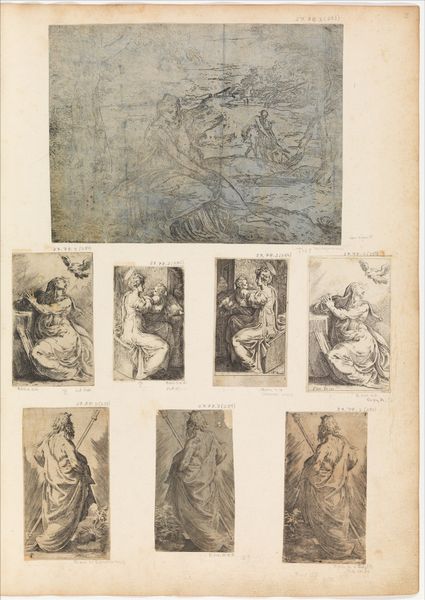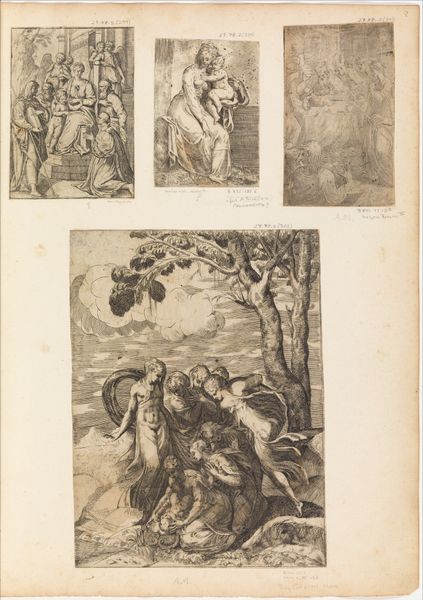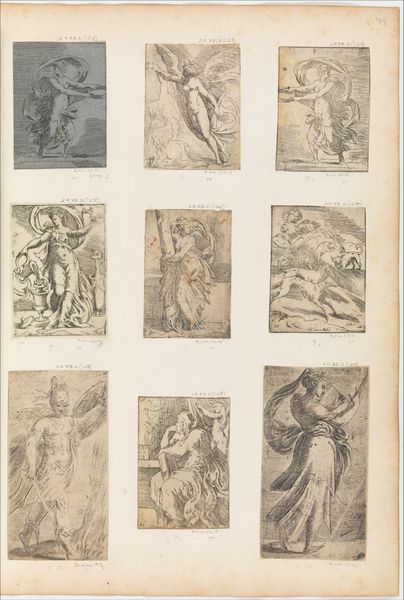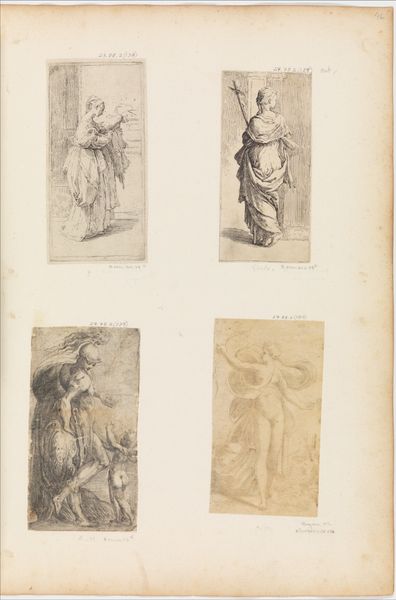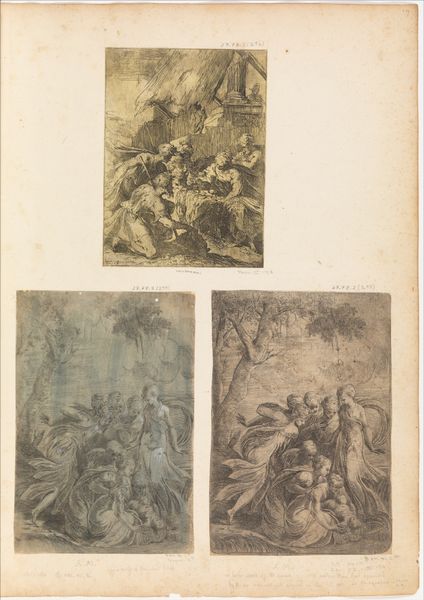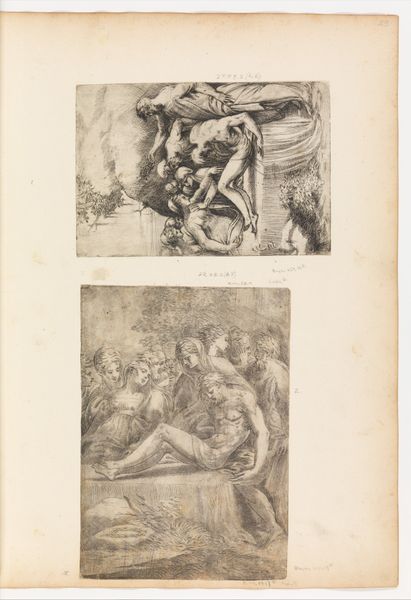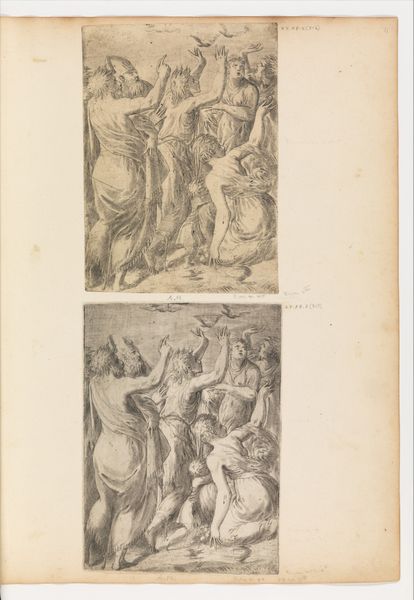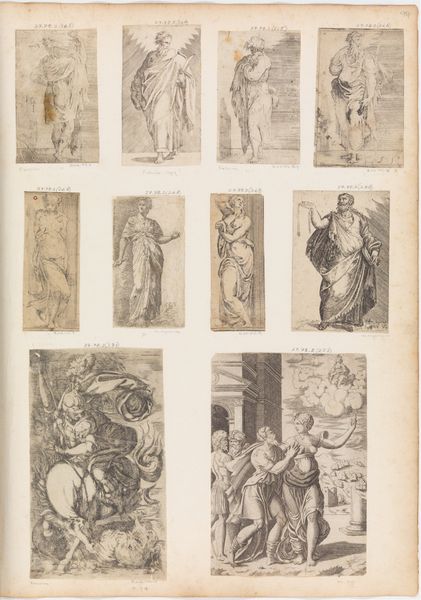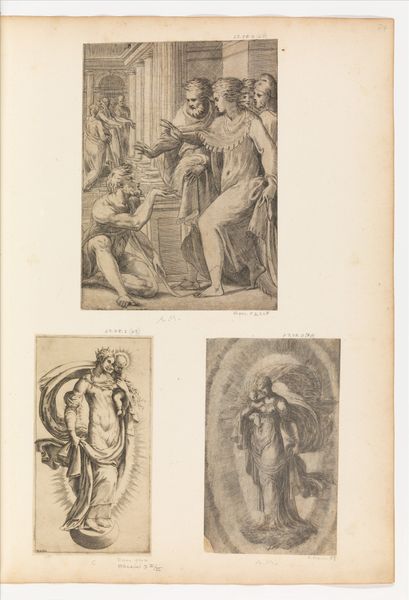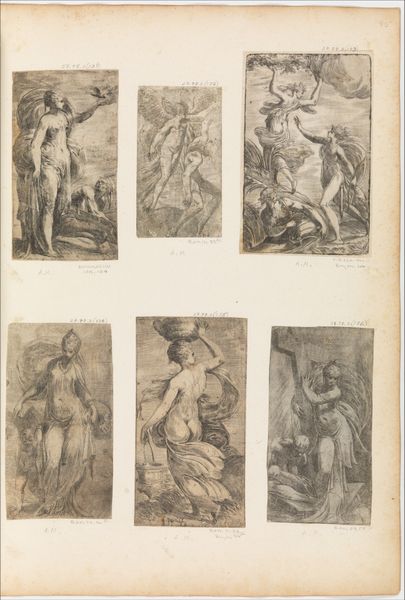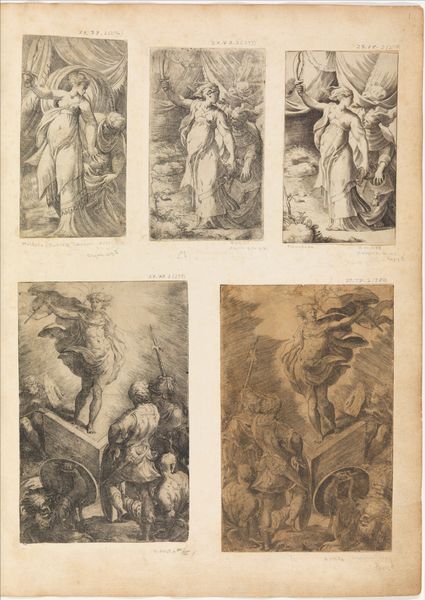
Rebecca and Eleazer at the Well 1540 - 1550
0:00
0:00
drawing, print, etching
#
drawing
#
narrative-art
# print
#
etching
#
figuration
#
11_renaissance
#
italian-renaissance
Copyright: Public Domain
Editor: So this is Andrea Schiavone's "Rebecca and Eleazer at the Well," made sometime between 1540 and 1550. It's an etching, right? There's a lot going on, it’s pretty densely packed with figures. What stands out to you about this print? Curator: This scene presents the biblical story with remarkable visual economy. Observe how the artist uses the well not only as a compositional anchor but also as a potent symbol. What meanings might water carry in this context? Editor: Well, it's life-giving, essential. And isn't the sharing of water a sign of hospitality, especially in that time? Curator: Precisely. The act of offering water embodies charity and foreshadows Rebecca's virtues, soon to make her Isaac’s wife. Schiavone invites us to decode social and spiritual values embedded within simple, everyday gestures. Consider, too, the prominence of animals. What might they signify? Editor: Hmmm… faithfulness? The dog at the bottom looks pretty loyal. Curator: Yes, and also consider the camel train hinted at in the background, representing wealth and the long journey ahead. Think about how the imagery emphasizes movement. Can you see a narrative being woven through symbols of travel, welcome, and shared resources? Editor: I think I'm starting to! It's more than just a depiction; it's about deeper values expressed visually. Curator: Schiavone masterfully condenses the entire narrative into a single image. The anticipation, generosity, and future possibilities are all encapsulated within this seemingly simple scene. Editor: I'll definitely look at etchings differently from now on. Thanks for pointing out those symbolic details. Curator: My pleasure. Every line in this etching, like echoes from cultural memory, enhances our reading of the text.
Comments
No comments
Be the first to comment and join the conversation on the ultimate creative platform.
